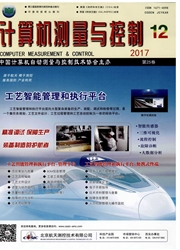

 中文摘要:
中文摘要:
脑电信号具有时变性、个体差异性且容易受身体状态、心情、体位等因素影响的特点,传统的BP网络分类器难以适应动态脑电特征的变化致使在线分类效果急剧下降;文章提出一种具有在线自学习能力的脑电信号分类方法;该方法将BP网络作为传统Ada—Boost集成学习框架下的弱分类器,形成BP—AdaBoost基本网络分类器;进而,引入遗忘因子改进AdaBoost算法,通过改变样本的初始权重增强其时间相关性,获得BP—AdaBoost分类器;并进一步借鉴半监督的思想增加基于K近邻规则的自评判反馈环节,提高获取新增样本确切标签的能力,适时增加训练样本信息;最后,以国际BCI竞赛数据集为基础,采用Hilbert~Huang变换提取脑电特征进行了仿真实验;结果表明:文章提出的分类方法对时问、个体均具有较好的自适应能力和稳健性,与传统BP神经网络相比分类正确率提高约23.42%。
 英文摘要:
英文摘要:
With time--varying volatility and individual differences, EEG signals are easily affected by physical condition, mood, body posture, etc. The online classification performance of the traditional BP network is lowered significantly because of the difficulties in tracking the dynamic changes oS EEG. This paper presents an online Self--learning Approach to EEG Classification. It applies BP network as a weak classifiers of the traditional AdaBoost integrated learning framework to form a BP--AdaBoost basic network classifier. Then, a forgetting factor is introduced to improve the AdaBoost algorithm, adjust the initial weights of the sample to enhance its temporal correlation, and ob- tain the BP--AdaBoost classification. Furthermore, by increasing the self-- evaluation feedback loop based on K--nearest neighbour rule, which is learned from the idea of semi--supervision, the ability of obtaining the exact labels of the added sample is increased and the sample information also can be expanded timely. Finally, based on the data of the international BCI competition database, a simulation experiment is conducted by extracting EEG features through Hilbert--Huang transform. Compare with the traditional BP neural network increased about 23.42~ classification accuracy. The result shows that the approach, proposed in this paper, has a good adaptable ability and robustness in both time and individual.
 同期刊论文项目
同期刊论文项目
 同项目期刊论文
同项目期刊论文
 期刊信息
期刊信息
